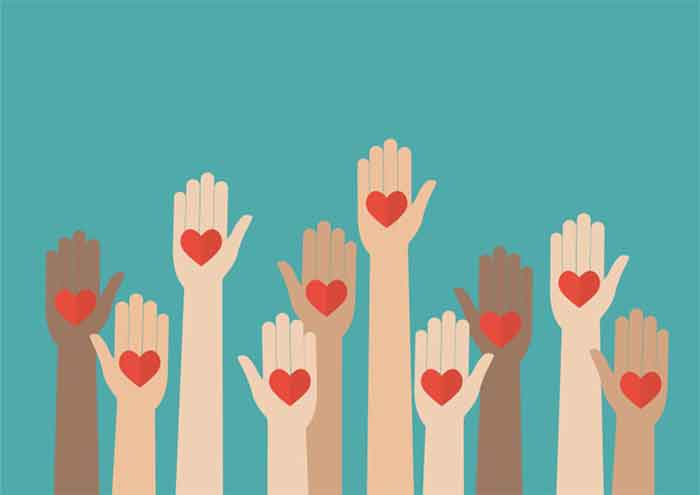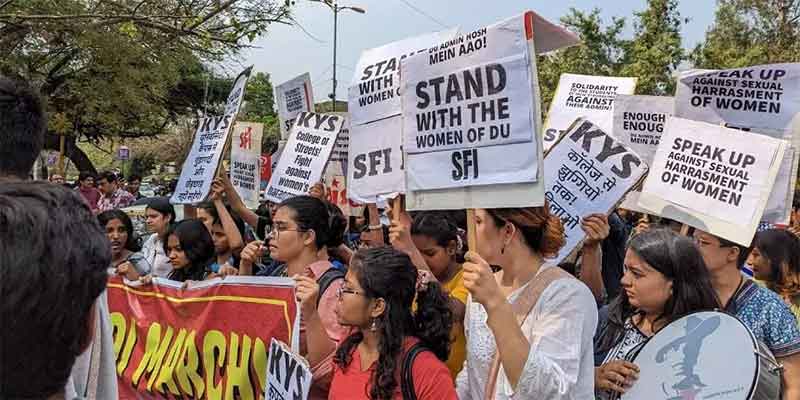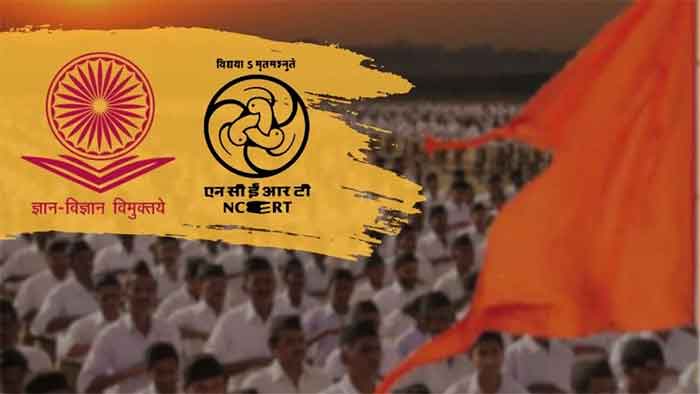
Every academic year comes to an end with the graduation of students who are ostensibly ready to take up a new set of challenges and goals. Many of them have dreams both big and small, however, it is merely survival that matters the most as many of them consider their dreams to be silly. Pash, a Punjabi poet says, “The most dangerous thing is the demise of our dreams” I think this is particularly true regarding the young souls filled with vigour and vitality but due to several fetters they are not able to work towards their dreams.
It is an open secret that many of us don’t want to discuss- the condition of education in India. While urban areas are relatively better off most of India is rural the recent National Family Health Survey shows that in every single field rural areas do worse than urban ones, however, that isn’t to say that in urban India things are smooth. A survey conducted in Karnataka last year found that out of the 93 lakh students surveyed 40% did not have an internet connection and 33% did not have access to digital devices- something essential for learning during the pandemic. Access to education is restricted to many Indians and there is a socio-economical divide as well. Having enough money to get a decent education is just one aspect since there are several obstacles that many groups face for instance the Sachar Committee report provides us an insight into the matter. However, access to education alone is not the open secret that I spoke of; the open secret is the combination of several other things albeit not having sufficient money is something quite important. The state has been abdicating its responsibility to deliver social services such as education as spending on education as the percentage of GDP has reduced. Barring a few exceptions like Delhi, government education is not at par with private education and the latter often uses English as the medium of instruction. Students who lack proficiency in this language are ridiculed in urban areas and don’t have further opportunities in higher education.
The doctor-patient ratio in India is 1:1511 whereas the WHO recommended ratio is 1:1000 this leads to stress among doctors and obviously, this is a contributing factor to the healthcare in India being in such a state. What exactly is impeding the delivery of good quality healthcare to all people? Why should individuals work so hard studying for competitive exams and studying further if they are going to be overworked and may not be able to provide the required services? It seems that rather than encouraging the development of a sufficient number of individuals to provide services we as a society are encumbering them.
According to a report published by Azim Premji Univesity in 2018 unemployment among highly educated individuals is thrice the national average. This is frightening because students take loans to pay fees hoping once they are employed they will pay them off however in 2017 Indian banks saw a 142% increase in student loan defaults during just over three years. There is ambiguity in where exactly we as a society are going with not providing sufficient opportunities in education and not providing job opportunities as well as not providing the required amount of services to the people.
The national crime records bureau in 2020 found that suicides among students made up 8% of the total suicides. According to psychologists, this is due to fear about younger ones being promoted to the next class and for the older ones worrying about job prospects and careers There are also several incidents of students in prestigious colleges who take their lives due to stress.
Coaching institutes charge enormous amounts of fees and according to a 2014 survey, 80% of students studying in National Law Schools did take coaching for CLAT. Without getting great scores in this highly competitive law entrance exam admission into NLUs is not possible. Further, the amount of stress created due to these coaching institutes is enormous. 58 students enrolled at private coaching centres in Kota, Rajasthan’s private coaching hub, committed suicide between 2013 and 2017.
On one hand, some argue that only such training will prepare them for the future I find it peculiar that the proponents of this argument never look into the idea of simply making jobs less stressful. Secondly, due to such numbers various institutions have programs that supposedly seek to combat the issue however the first aid used for minor scars is not the treatment for a six-inch deep stab wound and nor is getting stabbed a way to be prepared to handle stab wound later in other words, neither the measures are sufficient nor the logic is used by stress handling enthusiasts correct.
The recent agitation in Bihar by students protesting the actions by the Railway Recruitment Board as well as the protest that was done by health care workers compel us to ask certain questions that have to do with the well-being of the people i.e., questions regarding education, employment, and stress- why should we participate in this rat race? and who exactly benefits from it? Certainly, it is not the general public that lacks proper healthcare, legal aid, and other services. One important observation we must make is that although there are social divides with some groups being relatively well of and a huge chunk of people not having access to education like many people in urban areas do the phenomenon of being affected negatively applies to a large number of people including those who are in urban areas, those who can afford private education and have access to digital learning and so on i.e., despite stratification, there is something that unites a large number of people and this link may prove to be a driving force for a better tomorrow. Perhaps there will be one day when the youth can dream freely and not simply consider them silly as they have opportunities to turn their dreams into reality.
Some Statistics on Education in India
- In Karnataka, last year a survey was published in July which found that among the 93 lakh studentssurveyed, more than 8 lakh students or close to 40%, did not have internet connectivity. The report added that 31.3 lakh students, or 33%, did not have access to digital devices like phones, tablets and laptops, and about 8.6 lakh had no radio or television in their homes. Urban areas have better access.1
- In an attempt to bridge this digital divide in June 2021 the govt. launched a program that among other things, distributed 1.55 lakh tablet PCs to students pursuing higher education such as diploma, degree etc. Overall according to the Higher Edu Minister Ashwath Narayan this will benefit around 5 lakh students but as we can see 5 lakh is not even close to 30 lakh.2
- 7%govt schools have access to internet & only 34.3 % have functional computer facilities (2019-20) 3 In all India level Less than 30% government schools had computers: Education Ministry data.4
- The total public expenditure by states and centre in education as the percentage of GDP for the period of 1999–2000 to 2011–2012 is less than 5 per cent.5
- Student suicides spiked to a new high of 12,526 in 2020 contributing 2% deaths, while farmer suicide rate stayed constant at 7.4% in 2019 and 2020. -NCRB6
- The most disturbing development pertains to the fact that the state is gradually abdicating its responsibility towards higher education, including planning for higher education, policymaking for higher education, and of course, the funding and delivery of higher education in favour of the private sector, under the guise of private participation, public–private participation and private initiatives.7An illustration of profit driven schools luring-people :Indian parents sending children to private schools often don’t get what they pay for, study finds(scroll.in)
- Students have to participate in this rat race and write competitive exams, however there are not enough doctors in India(WHO ratio 1:1000 but in India 1:1511source:15th Finance Commission 2021.8 Recently there were protests in Bihar. Let us see how competitive things are: Around 25 crore aspirants applied for 35,000 vacant posts in railways.9
- According to a report by Increasing Diversity by Increasing Access (IDIA), more than 85% of studentswho made it to the prestigious National Law Universities (NLUs) were Hindus and, of them, more than 30% belonged to the Brahmin community — the dominant Hindu caste. On the other hand, less than 4% of the students were Muslim, who constitute 14% of India’s population….According to the IDIA report, more than 95% of the students admitted to the NLUs had been educated in English-medium schools and more than 50% of the students hailed from families where both parents were proficient in the language…. A 2014 survey revealed that nearly 80% of students took coaching for CLAT, costing above Rs. 1 lakh — an economic capital not accessible to many in India.10

- There are approximately 55 million people in the labour market with at least a graduate degree – of which nine million are estimated to be unemployed. Employment among highly educated people is thrice the national average12
- That is, Indian banks saw a 142% increase in student loan defaults during a period of just over three years. 2017 13
- Sci Hub Issue
A 2016 analysis found that Indian scholars downloaded 3.4 million papers over a six-months period from on Sci-Hub. If these were downloaded legally, it would have cost $100-125 million. This is more than half of what all research institutes in India cumulatively spend on subscriptions to paywalled scholarly literature.1415 annual online subscription to a top-notch medical journal costs upward of Rs 15,000 in India.16 - Only 8% ofChildren in Rural Areas are Studying Online Regularly, Reveals Study.17
- Only 20%of school age children in India had access to remote education during the pandemic.18
- Govt further reduces spending on things like education however wealth of the rich increased and labour laws are relaxed.19

In rural Karnataka only 34% of enrolled students did online learning.20
Footnotes:
- ( source: https://www.thenewsminute.com/article/karnataka-govt-schools-are-set-start-classes-40-students-have-no-internet-151616)↩
- (https://www.deccanherald.com/state/top-karnataka-stories/karnataka-govt-launches-new-digital-learning-platforms-1000798.html)↩
- (https://timesofindia.indiatimes.com/city/mysuru/karnataka-only-34-of-govt-schools-have-working-computer-lab/articleshow/84309311.cms)↩
- https://www.thehindu.com/news/national/in-academic-year-2019-20-only-22-indian-schools-had-internet/article35082011.ece↩
- (Neoliberalism in higher education and the Brahmanical hegemony of knowledge production chapter 9 in Neoliberalism, Critical Pedagogy and Education https://1lib.in/book/17502283/3260e2)↩
- ( https://www.thehindu.com/news/cities/Hyderabad/student-suicides-go-up/article37729564.ece#:~:text=More%20students%20ended%20their%20lives%20in%202020%20than%202019%2C%20according,7.4%25%20in%202019%20and%202020. (paywalled) https://outline.com/qhEaK4)↩
- (Sci-Hub | Education and Development in India (Critical Issues in Public Policy and Development) || Private Higher Education in India | 10.1007/978-981-13-0250-3_18 (hkvisa.net))↩
- https://theprint.in/health/1-doctor-for-1511-people-1-nurse-for-670-covid-exposes-indias-healthcare-fault-lines/602784/)↩
- (https://indianexpress.com/article/explained/explained-controversy-recruitment-railway-jobs-7741550/)↩
- (https://theswaddle.com/making-indian-legal-education-more-inclusive-is-key-to-building-a-more-equitable-judicial-system/?utm_campaign=later-linkinbio-theswaddle&utm_content=later-18288690&utm_medium=social&utm_source=linkin.bio)↩
- From : Indian Higher Education System: Challenges And Suggestions (wright.edu)(2015)↩
- https://gdc.unicef.org/resource/why-india-should-worry-about-its-educated-unemployed-youth2019↩
- https://thewire.in/education/serious-indias-student-loan-default-problem↩
- https://science.thewire.in/the-sciences/sci-hub-case-academics-urge-court-to-rule-against-extortionate-practices/↩
- https://www.newslaundry.com/2021/09/18/will-indian-researchers-lose-free-access-to-scientific-papers↩
- https://scroll.in/article/982146/push-to-ban-sci-hub-pirate-website-will-blunt-indian-research-projects-warn-academics↩
- https://www.newsclick.in/only-8-per-children-rural-areas-studying-online-regularly-reveals-study↩
- https://outline.com/CjLhyUhttps://www.thehindu.com/news/national/remote-education-was-inaccessible-to-most-children-says-survey/article65021772.ece↩
- https://www.newsclick.in/govt-squeezes-spending-though-tax-collections-increased↩
- https://www.thehindu.com/education/schools/school-enrolment-fell-during-pandemic-annual-status-of-education-report/article37549996.ece(ASER 2021)↩















































